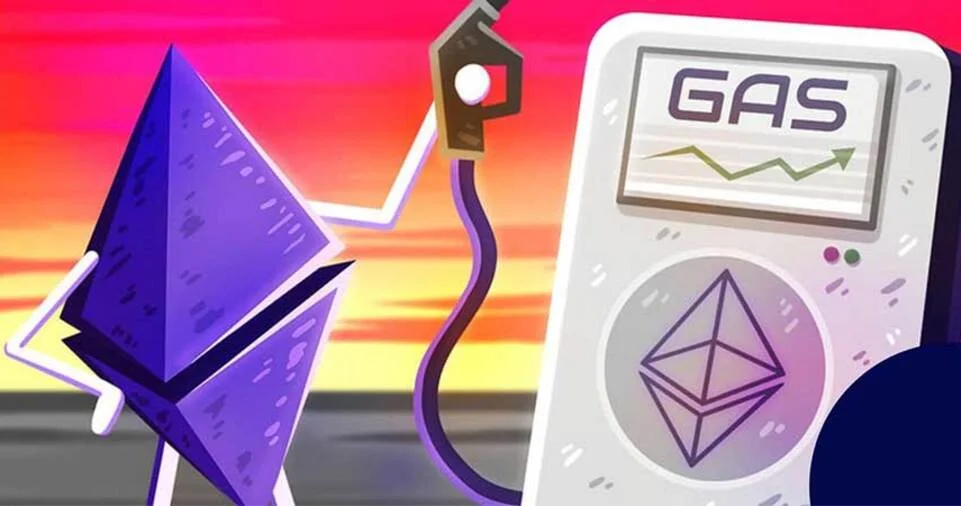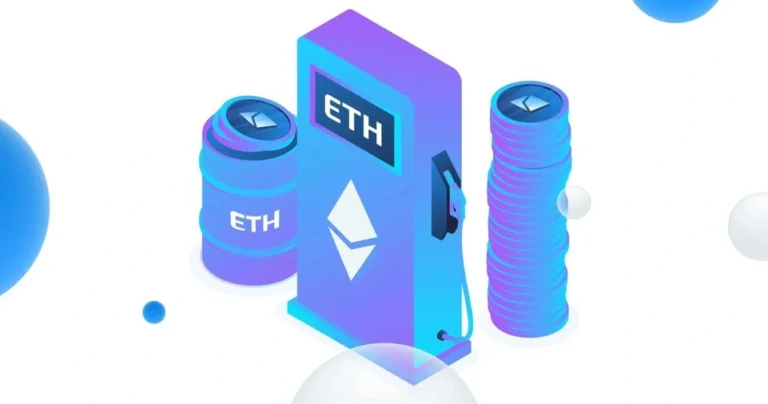Gas fees have become a significant concern for users of blockchain networks, particularly on Ethereum.
These fees, representing the cost of executing transactions or running smart contracts, can vary widely based on network congestion, transaction complexity, and other factors.
High gas fees can deter users from engaging with decentralized applications (dApps), trading cryptocurrencies, or participating in decentralized finance (DeFi).
However, there are several strategies to optimize gas fees and make blockchain interactions more cost-efficient.
This detailed guide will explore proven techniques to reduce gas costs and improve transaction efficiency on Ethereum and other blockchain networks.
What Are Gas Fees?
Before diving into optimization techniques, it is essential to understand what gas fees are.
Gas fees are charges users pay to execute transactions or interact with smart contracts on blockchain networks.
They compensate network validators (miners or stakers) for verifying and adding transactions to the blockchain.
For Ethereum, gas is measured in units, and the fee is calculated as:
Gas Fee = Gas Units x Gas Price
- Gas Units: The amount of computational work required to execute a transaction.
- Gas Price: The price per gas unit, typically measured in gwei (1 gwei = 0.000000001 ETH).
Gas fees can fluctuate dramatically depending on network congestion, with higher fees during peak periods.
Understanding these dynamics is critical to optimizing transaction costs and enhancing the overall blockchain experience.
Proven Strategies to Optimize Gas Fees

Use Layer 2 Solutions
Layer 2 solutions are one of the most effective ways to reduce gas fees.
These secondary protocols are built on top of Ethereum or other blockchains, designed to process transactions off-chain while maintaining security and decentralization.
By reducing the load on the main blockchain (Layer 1), Layer 2 solutions lower fees and increase transaction speeds, making them a practical choice for cost-conscious users.
Popular Layer 2 Solutions:
- Arbitrum: A rollup solution that processes transactions off-chain and posts compressed data to Ethereum, offering reduced fees.
- Optimism: Similar to Arbitrum, Optimism provides fast and low-cost transactions for Ethereum users.
- Polygon (Matic): A sidechain that connects to Ethereum and supports faster, cheaper transactions while maintaining compatibility.
How to Use Layer 2 Solutions:
- Transfer your tokens to the Layer 2 network using a bridge.
- Use dApps and wallets that support the chosen Layer 2 solution.
- Withdraw funds back to the main chain if needed.
These solutions are ideal for frequent traders, DeFi users, or NFT enthusiasts who want to minimize costs without compromising speed or functionality.
Time Your Transactions
Gas fees on Ethereum and other blockchains fluctuate throughout the day based on network activity.
By timing your transactions strategically, you can significantly reduce costs.
When Are Gas Fees Lower?
- Weekends and Non-Peak Hours: Fees tend to be lower during weekends and late-night hours (UTC), when fewer users are active.
- Use Gas Tracking Tools: Platforms like Etherscan Gas Tracker or Blocknative provide real-time data on gas prices and recommend optimal transaction times.
Practical Tips for Timing Transactions:
- Monitor gas prices for a few days to identify trends.
- Schedule non-urgent transactions during low-activity periods.
- Use wallets that allow you to set a custom gas price and wait for execution when fees drop.
Timing transactions effectively can lead to substantial savings over time, especially for frequent blockchain users.
Adjust Gas Settings Manually
Most wallets and dApps allow users to customize gas settings. Adjusting these settings can help optimize costs, though it comes with risks.
Steps to Adjust Gas Settings:
- Use a Wallet with Advanced Settings: MetaMask and similar wallets enable users to modify gas prices and limits.
- Set a Lower Gas Price: Reduce the gas price manually to save costs. However, transactions with extremely low gas prices may fail or experience delays.
- Understand Gas Limits: Ensure the gas limit is sufficient for the transaction. Underestimating the gas limit may cause the transaction to fail.
While this method requires some technical knowledge, it can be highly effective for users looking to minimize costs without sacrificing transaction reliability.
Use Wallets That Optimize Gas
Some wallets and platforms are specifically designed to optimize gas fees.
These wallets use advanced algorithms to identify the most cost-effective options for executing transactions.
Recommended Wallets:
- MetaMask: Offers a gas estimator and allows users to customize gas settings.
- 1inch Wallet: Aggregates decentralized exchanges (DEXs) and optimizes gas costs by routing trades through the most efficient paths.
- Rainbow Wallet: A user-friendly Ethereum wallet that provides insights into gas fees and transaction costs.
Using such wallets simplifies the process of optimizing gas fees, particularly for beginners who may be unfamiliar with manual settings.
Batch Transactions
Batching multiple transactions into a single one is another effective way to reduce gas fees.
This method is particularly useful for frequent users of DeFi platforms or those managing multiple addresses.
How to Batch Transactions:
- Use Multi-Send Tools: Platforms like Gnosis Safe allow you to bundle several transactions into one.
- Utilize dApps with Built-In Batching: Some DeFi platforms enable batching operations like token swaps, liquidity provision, and staking.
By batching transactions, users can share the gas cost across multiple operations, leading to significant savings and streamlined blockchain activities.
Explore Alternative Networks
Ethereum is not the only blockchain offering smart contracts and DeFi capabilities.
Many alternative networks provide lower gas fees and faster transactions, making them attractive options for cost-sensitive users.
Popular Alternatives:
- Binance Smart Chain (BSC): Known for its low fees and compatibility with Ethereum dApps.
- Avalanche (AVAX): A scalable platform for DeFi and dApps with minimal gas costs.
- Solana (SOL): Offers near-zero transaction fees and high throughput, ideal for high-frequency users.
How to Use Alternative Networks:
- Transfer funds to the desired network using a bridge.
- Use compatible wallets and dApps.
- Take advantage of the network’s low fees for transactions, trading, and DeFi activities.
For users willing to explore beyond Ethereum, these networks provide a cost-effective solution without compromising performance.
Use Gas Tokens
Gas tokens are a lesser-known but effective method for optimizing fees. These tokens allow users to store gas when prices are low and redeem it when prices rise.
Popular Gas Tokens:
- Chi Gas Token: Minted when gas prices are low and burned to reduce transaction costs.
- GST2: Another gas token designed to minimize fees during high-cost periods.
How to Use Gas Tokens:
- Mint gas tokens during periods of low network activity.
- Burn these tokens to reduce gas fees for future transactions.
While the effectiveness of gas tokens has diminished with Ethereum upgrades like EIP-1559, they may still be relevant in specific use cases, particularly for advanced users.
Leverage Fee Optimization Features on dApps
Many decentralized applications (dApps) provide built-in tools to optimize gas fees.
These features help users execute transactions more cost-effectively without requiring manual adjustments.
Examples of dApps with Optimization Features:
- 1inch: Routes trades through the most efficient paths to minimize gas costs.
- Balancer: Allows users to trade with reduced fees, depending on the liquidity pool.
- Uniswap v3: Offers advanced settings to optimize gas usage for swaps.
Using dApps with fee-saving features ensures a smoother and more cost-efficient user experience across blockchain activities.
Wait for Ethereum Upgrades
Ethereum’s roadmap includes several upgrades aimed at reducing gas fees and improving scalability.
The most notable recent upgrade, EIP-1559, introduced a base fee mechanism that makes gas prices more predictable.
However, future upgrades promise even greater improvements.
Upcoming Ethereum Upgrades:
- Sharding: A scalability solution that splits the network into smaller “shards,” reducing congestion and fees.
- Proto-Danksharding (EIP-4844): An intermediate step toward full sharding, expected to lower Layer 2 costs further.
Staying informed about Ethereum’s development roadmap can help users prepare for upcoming changes that may impact gas fees significantly.
Use Gasless Transactions
Some protocols and platforms allow users to execute transactions without paying gas fees directly. Instead, the fees are covered by the dApp or delegated to a relayer.
Platforms Offering Gasless Transactions:
- Biconomy: Provides a relayer infrastructure that enables gasless interactions for users.
- Meta Transactions: Allow users to delegate gas fees to a third party, improving accessibility and ease of use.
Gasless transactions are particularly beneficial for onboarding new users who may be unfamiliar with gas fees or lack funds for initial transactions.
ALSO READ:
Last Words!
By implementing these strategies, users can significantly reduce gas fees and make blockchain interactions more cost-effective.
Whether you’re a frequent trader, DeFi enthusiast, or casual user, these techniques will help you save money, improve efficiency, and enhance your overall blockchain experience across Ethereum and other networks.











